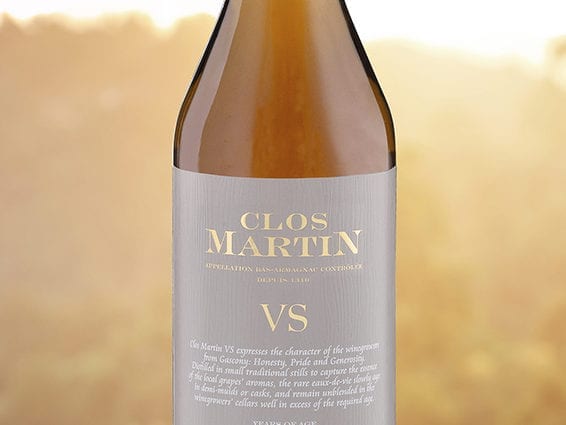As a member of the glorious family of French brandies, armanyak is very different from its strong counterparts, including the most popular of them – cognac. Armagnac has a reputation as a gourmet drink, its taste and aroma are remarkable for their expressiveness and amazing variety. It is not for nothing that the French say about this drink: “We gave the world cognac to keep the Armagnac for ourselves”.
Probably the first association that most people have when they say “Gascony” will be the name of the Musketeer d’Artagnan, but for a spirits lover it is, of course, Armagnac. Without the Gascon sun, clay soil and real southern heat, this drink simply would not have been born. Gascony lies south of Bordeaux and is much closer to the Pyrenees. Due to the hot southern climate, the grapes in Gascony contain a lot of sugars, which affects both the quality of local wines and the quality of brandy. The art of distillation on this land was mastered in the XII century. Apparently, this skill came to the Gascons from the Spaniards neighbors, and possibly from the Arabs who once lived in the Pyrenees.
The first mention of the Gascon “water of life” dates back to 1411. And already in 1461, the local grape spirit began to be sold in France and abroad. In the following centuries, Armagnac was forced to make room for the market – a powerful brandy was on the offensive. And, probably, Armagnac would have been destined to remain on the outskirts of history if local producers had not mastered aging in barrels. As it turned out, Armagnac takes much longer to ripen than Scotch whiskey or the same cognac. This discovery made it possible in the middle of the twentieth century to promote, first to the American and then to the European market, old aged Armagnacs, which instantly conquered the “advanced” alcoholic consumers and gourmets.
An important milestone in the history of Gascon brandy was the appearance in 1909 of a decree establishing the boundaries of the territory of its production, and in 1936 armanyak officially received the status of AOC (Appellation d’Origine Controlee). By law, the entire territory of Armagnac is divided into three sub-regions – Bas Armagnac (Bas ), Tenareze and Haut-Armagnac, each with a unique microclimate and soil characteristics. Of course, these factors affect the properties of the grapes, the wine obtained from it and the distillate itself.
Armagnac is known for its wide range of flavors and aromas. At the same time, seven aromas are considered the most typical for him: hazelnut, peach, violet, linden, vanilla, prune and pepper. This variety is determined in many ways by the number of grape varieties from which Armagnac can be made – there are only 12 of them. The main varieties are the same as in Cognac: foil blanche, unyi blanc and colombard. The crop is usually harvested in October. Then wine is made from the berries, and the distillation (or distillation) of young wine must be carried out before January 31 of next year, since by spring the wine can ferment, and it will no longer be possible to make good alcohols from it.
Unlike cognac, which is produced using double distillation, two types of distillation are allowed for Armagnac. For the first – continuous distillation – Armagnac alambic (Alambique Armagnacqais) is used, or the Verdier apparatus (named after the inventor), which gives a highly aromatic alcohol capable of long aging.
Alambique Armagnacqais was out of competition, until in 1972 in Armagnac, the Alambique Charentais, a double distillation cube from Cognac, appeared. This circumstance had a positive effect on the development of Gascon brandy: it became possible to blend two different types of alcohols, thus the flavor range of Armagnac expanded even more. The famous house of Janneau was the first in Armagnac to use both acceptable methods of distillation.
Armagnac aging usually takes place in stages: first in new barrels, then in previously used ones. This is done so that the drink avoids the overpowering influence of woody aromas. For barrels, by the way, they use mainly black oak from the local Monlesum forest. Young Armagnacs are designated “Three stars”, Monopole, VO – the minimum aging of such Armagnac is 2 years. The next category is VSOP, Reserve ADC, according to the law, this brandy cannot be less than 4 years old. And finally, the third group: Extra, Napoleon, XO, Tres Vieille – the legal minimum age is 6 years. There are, of course, exceptions: while most manufacturers keep the VSOP Armagnac in oak barrels for about five years, Janneau for at least seven. And alcohols for Armagnac Janneau XO are aged in oak for at least 12 years, while for this class of Armagnac, six years of aging are enough.
In general, the importance of the Janneau house for Armagnac is difficult to overestimate. Firstly, it belongs to the number of the Great Houses of Armagnac, which glorified this drink throughout the world. And secondly, it is one of the oldest producers in the region, founded by Pierre-Etienne Jeannot in 1851. Today the company also remains in the hands of one family, which values tradition more than anything else and is simply fanatically devoted to quality. So, just like 150 years ago, Janneau – unlike most of the big growers – distills, matures and bottles its produce where the vineyards are located at home.
The classic line of the house includes the famous Armagnacs Janneau VSOP, Napoleon and XO. It is quite difficult to argue about their advantages and disadvantages, because each of them has its own individual, unlike anything else, character. For example, Janneau VSOP is known for its elegance and lightness. Janneau Napoleon simply amazes with its perfumery aroma with an abundance of tones of vanilla, dried fruits and berries. And Janneau XO is known as one of the softest and most delicate Armagnacs in all Gascony.










